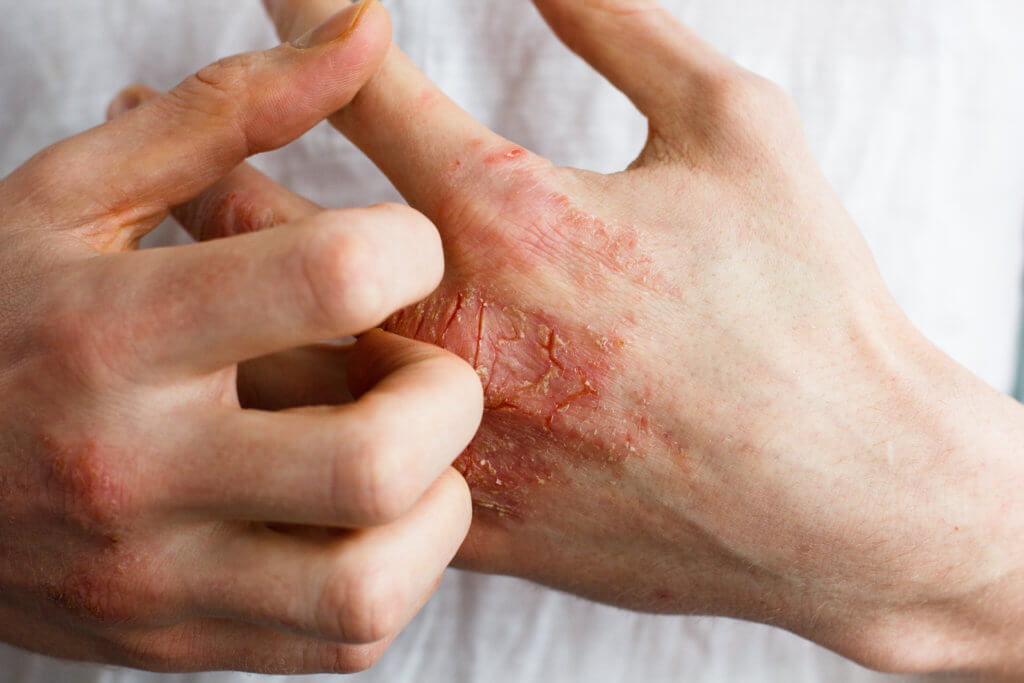BOSTON — The mystery of what causes people to itch may have finally been solved. Researchers from Harvard Medical School found that a common skin bacterium, Staphylococcus aureus, can directly trigger itching by acting on nerve cells. This discovery could explain why persistent, intense itching often accompanies skin conditions like eczema.
In experiments with mice, the researchers observed that the bacterium S. aureus intensified their itch. They pinpointed a specific bacterial enzyme that activates a protein involved in blood clotting, thereby inducing the itch. Remarkably, administering an existing anticlotting drug to the mice halted their itch.
Further tests on human cells led the team in Boston to believe that this anticlotting drug could be a key ingredient in developing anti-itch creams. Published in the journal Cell, their study suggests a potential end to the long-standing enigma of the itch.
Previously, itching associated with skin conditions like eczema was thought to stem from skin inflammation. However, these new findings indicate that S. aureus alone can trigger the itch through a molecular chain reaction that leads to the urge to scratch.
The researchers explain that skin conditions often disrupt the balance of microorganisms that maintain healthy skin, allowing S. aureus to thrive and cause itching.
“We’ve identified an entirely novel mechanism behind itch — the bacterium Staph aureus, which is found on almost every patient with the chronic condition atopic dermatitis. We show that itch can be caused by the microbe itself,” says senior author Isaac Chiu, an associate professor of immunology at the Blavatnik Institute of HMS, in a media release.
“Itch can be quite debilitating in patients who suffer from chronic skin conditions. Many of these patients carry on their skin the very microbe we’ve now shown for the first time can induce itch,” adds study first author Liwen Deng, a postdoctoral research fellow in the Chiu Lab.

Dr. Chiu’s team conducted experiments demonstrating that the bacterium Staphylococcus aureus releases a chemical that activates a protein on the nerve fibers responsible for transmitting signals from the skin to the brain. This activation is a crucial part of the itch-scratch cycle. When mice were treated with an existing anti-clotting medicine, it effectively blocked this protein’s activation, thereby interrupting the cycle and reducing the urge to itch.
The experiments revealed that when the mice’s skin was exposed to S. aureus, they developed an increasingly intense itch over the following days. This itch led to scratching, which worsened the skin damage and spread it beyond the initial exposure area. Additionally, the mice became hypersensitive to normally non-itchy stimuli, a condition known as “alloknesis,” commonly seen in patients with chronic skin conditions characterized by persistent itching. This hypersensitivity can also occur in individuals without underlying skin conditions, as evidenced by the common itchy sensation caused by wearing woolen clothing.
Further investigation into how the bacterium triggers itching identified the bacterial enzyme protease V8 as the culprit. The researchers found that V8 induces itching by activating the protein PAR1, located on skin neurons. These neurons originate in the spinal cord and transmit various sensory signals, including touch, heat, pain, and itch, from the skin to the brain. PAR1 typically remains inactive but becomes activated in the presence of certain enzymes, including V8.
The team’s mouse experiments showed that once PAR1 is activated, it starts a signal that the brain interprets as an itch. When these experiments were replicated using human neurons, they exhibited a similar response to V8, indicating a potential broader relevance of these findings.
“When we started the study, it was unclear whether the itch was a result of inflammation or not,” Deng says. “We show that these things can be decoupled, that you don’t necessarily have to have inflammation for the microbe to cause itch, but that the itch exacerbates inflammation on the skin.”

Since PAR1, the protein activated by S. aureus, is involved in blood clotting, the researchers tested whether an already approved anticlotting drug that blocks it would stop the itch – which it did. The mice whose skin was exposed to S. aureus experienced rapid improvement following treatment with the drug, and their desire to scratch subsided dramatically.
As this PAR-blocking medication is already available and in use by humans, the researchers suggested its active ingredient could be repurposed as the basis for an anti-itch cream. An immediate question that still begs an answer is whether other microbes can trigger an itch, which the researchers plan to answer in future work.
“We know that many microbes, including fungi, viruses, and bacteria, are accompanied by itch but how they cause itch is not clear,” Chiu notes.
Beyond that, the HMS team will also strive for answers as to why a microbe would cause an itch, and whether there is some kind of evolutionary benefit for it. One possibility is that pathogens may hijack itch and other neural reflexes to their advantage, similar to how previous research has shown that the TB bacterium directly activates neurons to cause cough, which might enable it to spread more easily from one host to another.
“It’s a speculation at this point, but the itch-scratch cycle could benefit the microbes and enable their spread to distant body sites and to uninfected hosts,” Deng concludes. “Why do we itch and scratch? Does it help us, or does it help the microbe? That’s something that we could follow up on in the future.”
You might also be interested in:
- Protein in tick saliva emerges as possible treatment for chronic pain, severe itching
- What is psoriasis? Everything you need to know about the chronic skin condition
- Best Face Wash For Dry Skin, According To Skincare Experts
South West News Service writer James Gamble contributed to this report.

